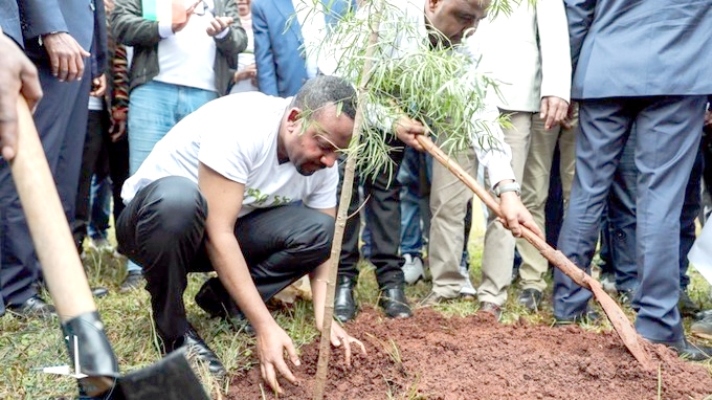Editorial
Ethiopians plant a record 353 million trees in one day

Dr Getahun Mekuria, the country’s minister of innovation and technology, said 353 million trees had been planted by Monday evening, surpassing the initial goal of 200 million trees planted in one day. “Today Ethiopia is set in our attempt to break the world record together for a green legacy,” the office of Abiy Ahmed, the country’s prime minister, tweeted on Monday morning.
Ethiopia is in the middle of a campaign to plant 4 billion trees between May and October.
The initiative is part of Ethiopian’s Prime Minister Ahmed’s plan to help restore the country’s landscape, which experts say is quickly being eroded by deforestation and climate change.
Ethiopia is not stranger to the effects of climate change and drought. The country suffers from regular incidents of hunger and malnutrition arising from poor harvest, arising from drought.
The move to plant trees follows scientific evidence that forests can help to reduce the impacts of climate change by up to 25%.
In a related incident, Swiss scientists this week identified an area roughly the size of the United States that could be newly shaded by planting more trees. If the world’s nations then protected these 9 million square kilometres of canopy over unused land, the new global forest could in theory soak up enough carbon to reduce atmospheric greenhouse gas by an estimated 25%.
That is, the extent of new tree canopy would be enough to take the main driver of global heating back to conditions on Earth a century ago.
And a second study, released in the same week, identifies 100 million hectares of degraded or destroyed tropical forest in 15 countries where restoration could start right now – and 87% of these hectares are in biodiversity hotspots that hold high concentrations of species found nowhere else.
The global study of the space available for tree canopy is published in the journal Science. Researchers looked for land not used for agriculture or developed for human settlement. They excluded wetlands and grasslands already fulfilling important ecological functions. Agencies
Comments


















